How to Create an Effective Facebook Advertising Campaign
Planning a Facebook advertising campaign, whether you are an e-commerce business or not, is a no-brainer. The social media giant remains the biggest social networking site in the world, gathering more than 2 billion active monthly users. In fact, Americans spend an average of around 35 minutes on Facebook alone, which adds up to almost 2 years in one lifetime.
But before you spend your precious ad dollars on Facebook advertising, you need to know if it is indeed a fit for the objectives of your business. Like all forms of marketing campaigns, proper knowledge of what the platform can and can’t do will save you money in the long run.
Facebook advertising requires a higher level of commitment than other marketing campaigns. The most common use of the platform, content marketing, does not provide an immediate result in the short term. With proper nurturing however, it creates customers that are loyal to your brand.
If you are dead set on starting a Facebook ad, then you need to know how the process works.
How to Create a Facebook Ad
To create a Facebook ad, you need to have an ad account. First, you need to have an ad account for your pages. You can either go to Facebook Ads Manager for a personal account, or the Power Editor for business accounts.
Here’s what the initial Facebook Ads Manager page looks like.
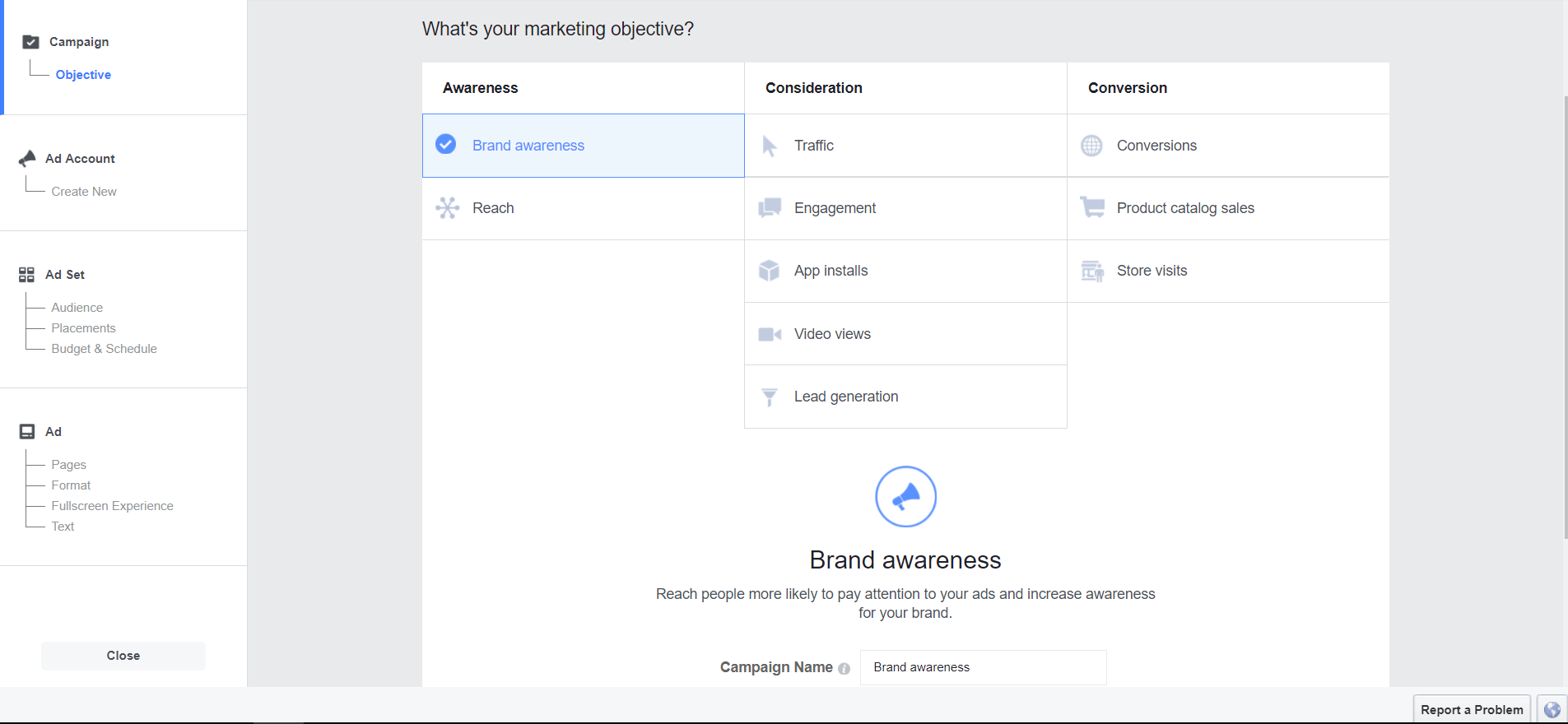
Here’s what the Power Editor of a business account looks likes.
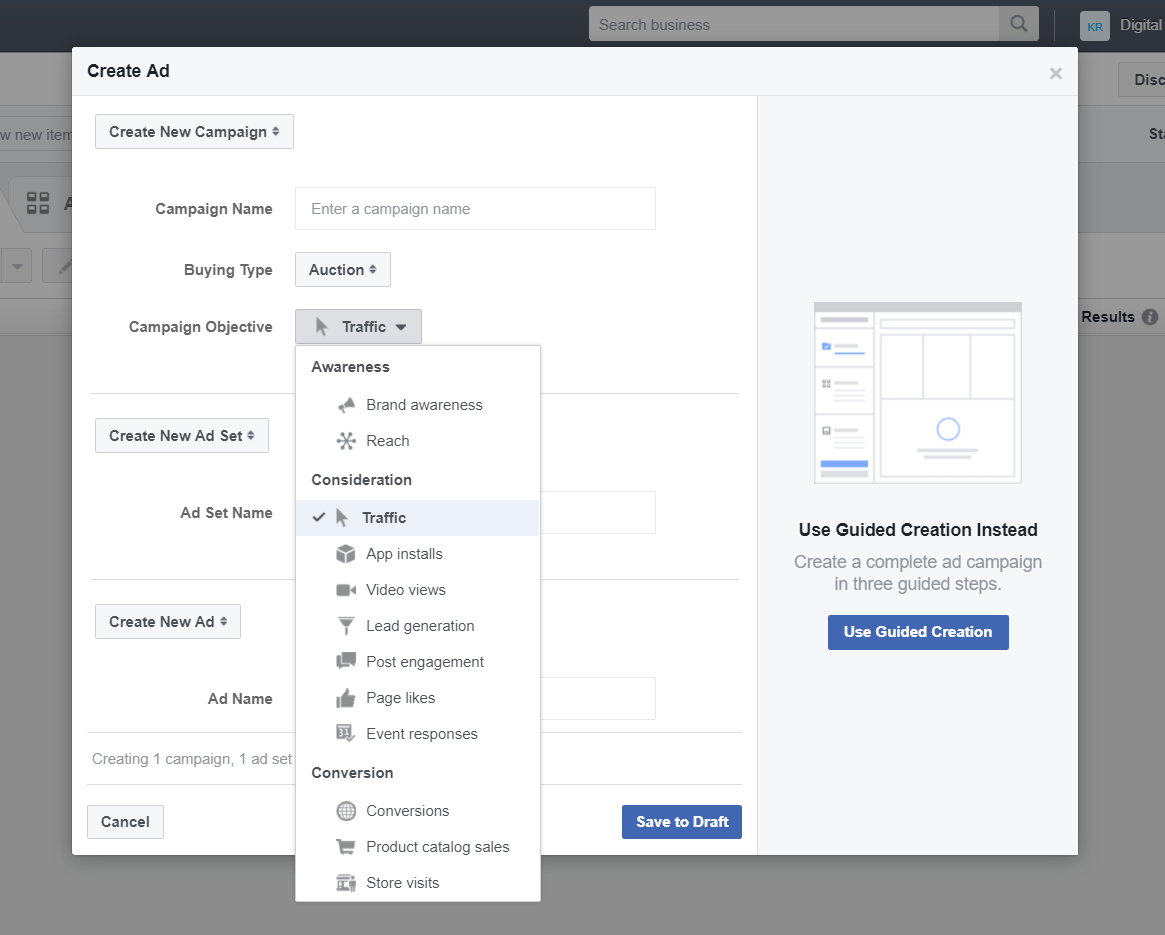
If you are unsure how to proceed, click “Use Guided Creation” to proceed to an interface similar to the ad manager.
Choosing a Campaign Objective
Facebook neatly divides the process of ad creation into three steps. First, you need to set the objective of your ad campaign. Next, you need to set your target audience, your budget, and your schedule. Finally, you need to format how the ad itself will appear to your audience.
For the campaign objective, Facebook listed several campaign objectives divided into three categories: Awareness, Consideration, and Conversion. Each choice tailors your ad creation process to fit your objective
a. Awareness
Under Awareness, you have Brand Awareness where Facebook shows your ad to people more likely to pay attention to it. These are usually the people whose hobbies and interests are aligned with the industry you are in. You may also choose Reach which shows your ad to the maximum number of people.
b. Consideration
Under Consideration, you have Traffic which sends ad viewers to a destination you set on and off Facebook, Engagement which gets more people to see your posts, App Installs which promotes your app if you have one, Video views which promotes your videos, and Lead Generation which collects lead information from users interested with your business.
c. Conversions
Finally, under Conversions, you have the general Conversion objective, which get people to take action on your website or app, Product Catalog Sales which show your product catalog based on audience interest, and Store Visits which promotes your physical store locations to users nearby.
In some of these campaign objectives, you can also do AB testing to check which strategy is more effective for you.
To determine the best campaign objective for your Facebook ad, you need to set a clear goal for your campaign. For example, if you want to increase audience in your Facebook posts, you should use the Engagement objective to promote your posts. If you want to increase your e-commerce sales, then you should use the Conversions objective to lead them to your website, or the Product Catalog Sales objective to highlight your products.
Setting Up Your Audience
After choosing the the right objective, you will be prompted to set up your target audience. You can either set one up using a custom audience where you can target specific email addresses, or users that interacted with your website, page, or app, or use targeting based on demographics.
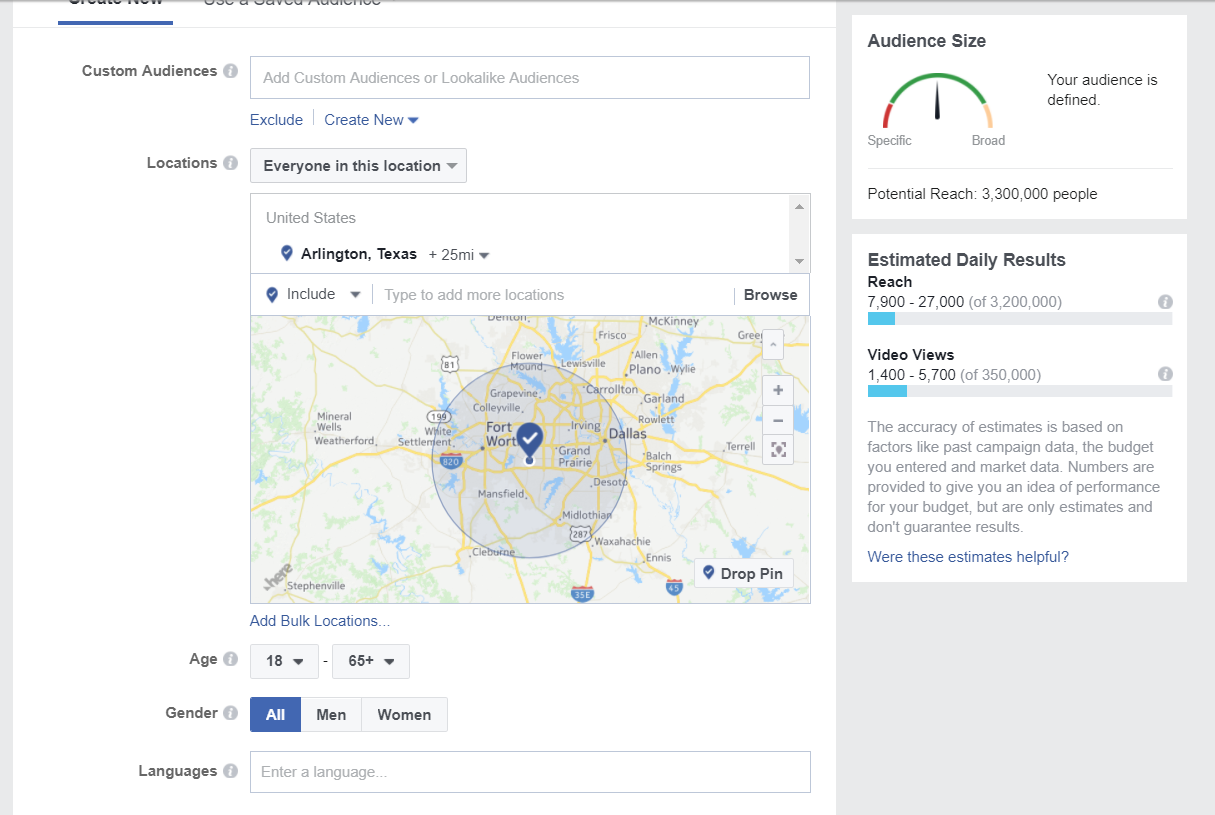
In demographics-based targeting, you can choose your audience based on their location, age, and gender. In the detailed targeting option, you can narrow your audience further based on other demographic categories, such as education, work, and political alignment, as well as interests and behavior.
With Facebook, you can leverage their features such as Life Events to your marketing advantage. For instance, if you are a travel business offering a promotion for newlyweds, you can set the Life Event demographic to Newlyweds. You can then narrow it down further to people whose Facebook activities suggest they are frequent travelers.
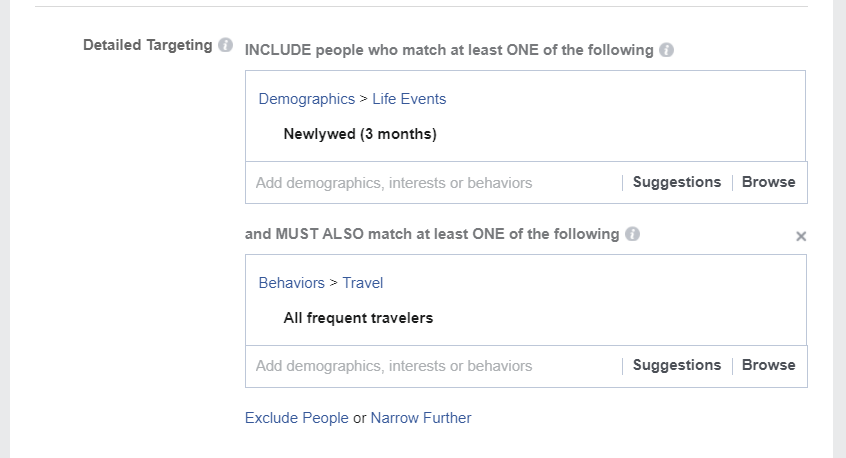
Customizing Your Facebook Ad Format
After setting your audience, as well as your budget for the campaign, you can now customize the format of the ad itself. The available options here will vary depending on the campaign objective that you set for your ad.
In general, there are 5 different ad formats that you can choose. You may also add a Fullscreen Canvas, a mobile-specific format that shows your ad in full screen for customers that interact with it.
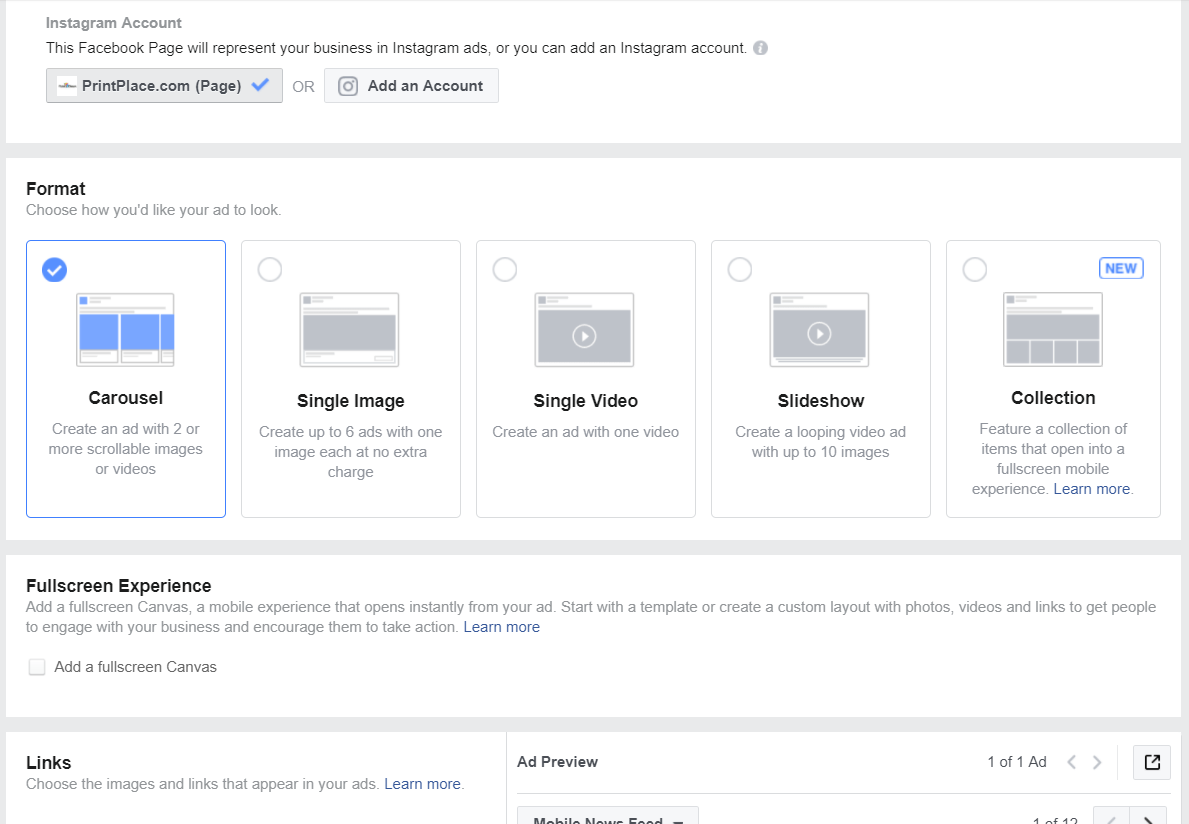
Finally, you can then set up the text, links, and call-to-action as well as preview how your ad will look to your audience.
Facebook Advertising Tips
Knowing how to set up your Facebook ad campaign is half the battle. The other half is understanding how to use that knowledge effectively for your business. Here are some quick Facebook advertising tips to get you on the right track.
1. Tailor your offer according to your audience.
Your Facebook ad’s offer can make or break your campaign. You only have a limited window to pique the interest of your audience before they scroll to the next post. That’s why you need to tailor your offer according to the interest of your target audience, and write great copy to accompany it.
2. Analyze your ad metrics and adapt.
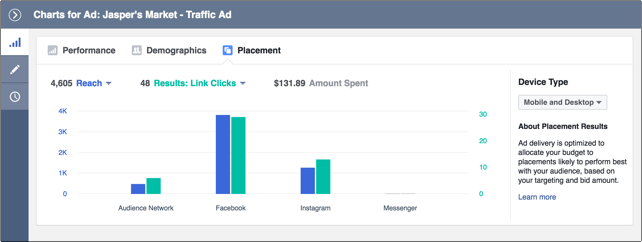
Facebook provides key metrics on your campaigns and breaks them down to several segments. For instance, you can see how many impressions and clicks you get on Desktop News Feeds versus Mobile News Feeds as well as the corresponding cost per click. Give your ads substantial time to mature then analyze what works and what doesn’t. Adapt accordingly.
3. Split test your Facebook ads.
After analyzing your metrics, especially if your current ad performance is decreasing, you should create a split test of your ads to see what works. You can create the same ad but with a different set of images, or the same image but with different copy. You may even try a new format and see if it performs better than your previous one.
I would like to emphasize again that creating a Facebook advertising campaign is a huge undertaking that needs a high level of commitment. If you’re still on the fence, it doesn’t hurt to take a step back and analyze your marketing strategy as a whole and see if Facebook is a good fit to your marketing objectives.
Planning a Facebook advertising campaign? Tell us your thoughts, and even your own tips in the comments below.
Kevin is PrintPlace.com’s resident marketing writer. If he isn’t writing, he’s probably reading the latest Haruki Murakami book or rooting for Tyrion Lannister for the Iron Throne.


